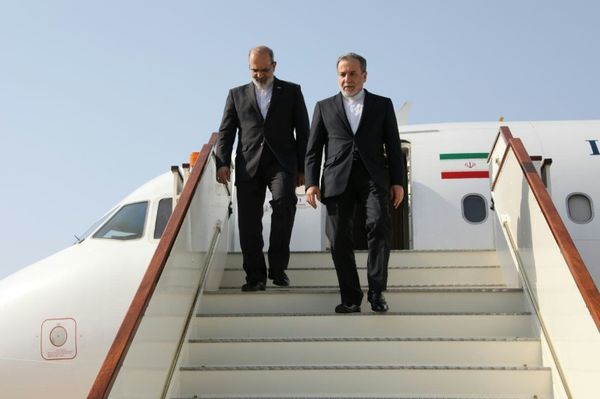These images purport to show the moment a tank of the pro-Russia Luhansk People’s Republic fires on houses in a village that it is “liberating”.
The images were obtained from the separatist, so-called Luhansk People’s Republic (LPR) on Thursday, June 23, along with a statement saying: “The liberation of the territory of the LPR is coming to its logical conclusion.
“The servicemen of a separate tank battalion of the [People’s Militia of the] LPR are successfully moving forward, fulfilling the tasks set by the command.
“In all key areas, the tank units of the republic provide continuous fire support for the advancing units of the defense department and allied forces, hold back enemy fire, destroy protected firing points, and promptly suppress counter-offensive attempts by the nationalist units of Ukraine.”
Russia invaded Ukraine on February 24 in what the Kremlin is calling a “special military operation.” June 23 marks the 120th day of the invasion.
The General Staff of the Armed Forces of Ukraine reported that between February 24 and June 23, Russia had lost about 34,430 personnel, 1,504 tanks, 3,632 armored combat vehicles, 756 artillery units, 240 multiple launch rocket systems, 99 air defense systems, 216 warplanes, 183 helicopters, 620 drones, 137 cruise missiles, 14 warships, 2,548 motor vehicles and fuel tankers, and 60 units of special equipment.

The Ukrainian military has said that it has launched airstrikes on Zmiinyi Island, which is also known as Snake Island, causing “significant losses” to Russia’s forces there in an operation that it says is ongoing.
Russia has conducted an anti-ship missile exercise in the Baltic Sea amid escalating tensions with NATO member Lithuania after the latter country blocked the transit of some goods to the Russian exclave of Kaliningrad.
Russian Foreign Ministry press secretary Maria Zakharova has said that Moscow’s response to Lithuania banning the transit of goods, sanctioned by the EU, to Kaliningrad will not only be diplomatic but also practical.
But Lithuanian Prime Minister Ingrida Simonyte has accused Russia of lying over the blockade, saying that people are still able to travel between Russia and Kaliningrad and that the blockade only affects one percent of goods.

Ukrainian forces have said that they have been successfully thwarting fresh Russian attempts to advance in the Kharkiv region of north-eastern Ukraine, but Russian forces have captured several settlements near Lysychansk and Sievierodonetsk, with 568 civilians believed to still be sheltering in Sievierodonetsk’s Azot chemical plant.
The city of Lysychansk, in the Luhansk Oblast of eastern Ukraine, is now said to be under siege from Russian and pro-Russian forces.
Iryna Vereshchuk, Ukraine’s Deputy Prime Minister and Minister for Reintegration of the Temporarily Occupied Territories, has urged locals in the Kherson region to evacuate, to help Ukrainian forces “de-occupy” the area.
British intelligence has claimed that the pro-Russian, so-called Donetsk People’s Republic (DPR) may have lost about 55 percent of its original forces.
President Volodymyr Zelenskyy said that this is a “historic week” as Kyiv awaits a decision from Brussels regarding its EU candidate status, with the EU expected to approve the application at a summit in Brussels on Thursday, June 23.

This comes after the European Parliament adopted on June 8 a resolution recommending that the European Union grant Ukraine the status of candidate country for EU membership. In the motion, 438 Members of the European Parliament voted in favor of the resolution, with 65 voting against and 94 abstaining.
President Zelenskyy, speaking to the African Union on Monday, June 20, also accused Russia of holding Africa “hostage” over grain and fertilizer shortages.
The head of the International Energy Agency, Fatih Birol, has warned that Russia may stop supplying gas to Europe this winter. Several European countries have already received less Russian gas than expected in the last few weeks, with European imports of natural gas from Russia dropping from approximately 40 percent before the war began to 20 percent.







